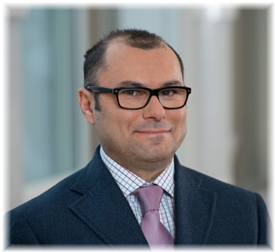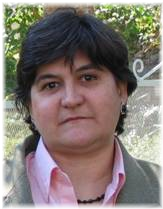 Dr Dominique Bernard is the research director and scientific leader at ICMCB-CNRS. Dr Bernard research interests includes X-ray computed micro tomography (XCMT) to characterise 3D microstructure of multi materials, to understand and quantify their modifications in time and to perform realistic numerical simulations of the coupled phenomenon occurring during those modifications. The group that he heads covers a domain going from data acquisition (using synchrotron or micro focus laboratory micro tomograph), data treatment (artefacts correction, filtering, 3D reconstruction, 3D registration) and data analysis (3D visualisation, 3D image analysis) to numerical modelling and numerical models development (change of scale methods, effective properties calculation, direct numerical modelling at the pore scale). Through a large number of industrial and academic projects, a great variety of materials have been studied: polymer foams under dynamic loading, aluminium alloys during solidification, ceramics during sintering, concrete during leaching, carbonate rocks during reactive percolation, ferroelectric composites.
Dr Dominique Bernard is the research director and scientific leader at ICMCB-CNRS. Dr Bernard research interests includes X-ray computed micro tomography (XCMT) to characterise 3D microstructure of multi materials, to understand and quantify their modifications in time and to perform realistic numerical simulations of the coupled phenomenon occurring during those modifications. The group that he heads covers a domain going from data acquisition (using synchrotron or micro focus laboratory micro tomograph), data treatment (artefacts correction, filtering, 3D reconstruction, 3D registration) and data analysis (3D visualisation, 3D image analysis) to numerical modelling and numerical models development (change of scale methods, effective properties calculation, direct numerical modelling at the pore scale). Through a large number of industrial and academic projects, a great variety of materials have been studied: polymer foams under dynamic loading, aluminium alloys during solidification, ceramics during sintering, concrete during leaching, carbonate rocks during reactive percolation, ferroelectric composites.
Research at ICMCB mainly concerns chemistry, physico-chemistry and physics of materials. The objective is to conceive, prepare, process and characterize materials in order to discover, control and optimize specific functionalities linked to the intrinsic qualities of the materials but also to surfaces and interfaces attributes. All scales from molecules, nano materials and mono crystals to massive multi-materials are considered. At ICMCB a large variety of physical, physico-chemical and chemical techniques of characterization are operational. Modelling, numerical simulation and visualisation are taking an increasing place in the research projects in close relationship with experiments. ICMCB is a multidisciplinary institute having strong partnership with physicists, geologists, biochemists and physicians in France and abroad.
 Born 1966 in Potenza, Italy, studied Nuclear Engineering (1989), and successively Physics (1998) at the University of Bologna, Italy. He got his Ph.D. in Materials Science at the University of Ancona, Italy, in 1997 working on residual stress analysis in welds of several metallic alloys. He worked as a Post-Doctorate in the UK, in Germany, and in France, working on residual stress analysis and mechanical properties of metals and ceramics. He then moved to industry (Corning Incorporated), where he worked first as the head of the Physical, Mechanical and Structural Characterization Group in France and then as a project leader in the United States. He is head of the Division 8.5 Micro NDT at BAM and Professor at the University of Potsdam as of 2012. His research interests are focused on the use of microstructures determined by computed tomography for the determination of mechanical properties and damage mechanisms of composites and ceramics.
Born 1966 in Potenza, Italy, studied Nuclear Engineering (1989), and successively Physics (1998) at the University of Bologna, Italy. He got his Ph.D. in Materials Science at the University of Ancona, Italy, in 1997 working on residual stress analysis in welds of several metallic alloys. He worked as a Post-Doctorate in the UK, in Germany, and in France, working on residual stress analysis and mechanical properties of metals and ceramics. He then moved to industry (Corning Incorporated), where he worked first as the head of the Physical, Mechanical and Structural Characterization Group in France and then as a project leader in the United States. He is head of the Division 8.5 Micro NDT at BAM and Professor at the University of Potsdam as of 2012. His research interests are focused on the use of microstructures determined by computed tomography for the determination of mechanical properties and damage mechanisms of composites and ceramics.
 Prof. Paloma Fernández Sánchez is member of the Department of Materials Physics at the Faculty of Physics in University Complutense of Madrid since 1986, when she incorporated as Assistant and worked for her PhD. She obtained a permanent position in 1992 and the Professorship in 2007.
Prof. Paloma Fernández Sánchez is member of the Department of Materials Physics at the Faculty of Physics in University Complutense of Madrid since 1986, when she incorporated as Assistant and worked for her PhD. She obtained a permanent position in 1992 and the Professorship in 2007.
Presently, the research of her group (Grupo de Física de Nanomateriales Electrónicos, FINE) is focused on the study of nanocrystalline semiconductors and their optical and electronic properties. She also has a research line focused on Materials Science Education, with special attention to Collaborative Work Strategies, Project and Game based Learning.
She is member of several scientific societies and at present President of the Spanish Materials Society (SOCIEMAT) and Vice-president of the Federation of European Materials Societies (FEMS).
 Professor Muruganant is a Commonwealth fellow and a doctorate from University of Cambridge, UK. Having worked with some of the most prestigious research institutes across the globe, his contributions in the field of structure-property correlation, understanding of the components of high temperature creep strength of ferritic steels have benefitted the scientific community. His contributions have benefitted corporate Jaints like ABB Sweden, Siemens Westinghouse corporation USA, ESAB Sweden and the like. Prof. Muruganant has a great passion for research, academia and technology. His contributions have been recognized through various publications in peer-reviewed Journals, invitation for keynote lectures in premier conferences across the globe. His models for structure-property correlation were the first in world to predict properties of steel as required by commercial standards. He has implemented modules through computational methods that have saved several million dollars in steel plants. He is the founder Chairman of the major International Conferences series in Materials like FiMPART (Frontiers in Materials Processing, Applications, Research and Technology) and FiNSTA (Frontiers in Nanoscience, Technology and Applications). He is currently serving as the Ministry of Steel Chair Professor having selected by the Ministry of Steel and Mines, Govt. of India as one of the Chair Professors and contributes from PSG College of Technology a 100 year old institute whose Design data book is used by all engineering fabricators in India and elsewhere. It is worthy to note that he is the youngest Chair Professor in the history of this Chair position - a befitting reward for his sustained and positive contribution to education, research and industry alike. He is also the director of the Steel Academics, Research and Consultancy Center (SARCC). He is an expert consultant selected by Intota experts USA. He is the Editor in Chief of Steel communications and Editor in Chief of the FiMPART Series Book published by Springer.
Professor Muruganant is a Commonwealth fellow and a doctorate from University of Cambridge, UK. Having worked with some of the most prestigious research institutes across the globe, his contributions in the field of structure-property correlation, understanding of the components of high temperature creep strength of ferritic steels have benefitted the scientific community. His contributions have benefitted corporate Jaints like ABB Sweden, Siemens Westinghouse corporation USA, ESAB Sweden and the like. Prof. Muruganant has a great passion for research, academia and technology. His contributions have been recognized through various publications in peer-reviewed Journals, invitation for keynote lectures in premier conferences across the globe. His models for structure-property correlation were the first in world to predict properties of steel as required by commercial standards. He has implemented modules through computational methods that have saved several million dollars in steel plants. He is the founder Chairman of the major International Conferences series in Materials like FiMPART (Frontiers in Materials Processing, Applications, Research and Technology) and FiNSTA (Frontiers in Nanoscience, Technology and Applications). He is currently serving as the Ministry of Steel Chair Professor having selected by the Ministry of Steel and Mines, Govt. of India as one of the Chair Professors and contributes from PSG College of Technology a 100 year old institute whose Design data book is used by all engineering fabricators in India and elsewhere. It is worthy to note that he is the youngest Chair Professor in the history of this Chair position - a befitting reward for his sustained and positive contribution to education, research and industry alike. He is also the director of the Steel Academics, Research and Consultancy Center (SARCC). He is an expert consultant selected by Intota experts USA. He is the Editor in Chief of Steel communications and Editor in Chief of the FiMPART Series Book published by Springer.
 Dr Dominique Bernard is the research director and scientific leader at ICMCB-CNRS. Dr Bernard research interests includes X-ray computed micro tomography (XCMT) to characterise 3D microstructure of multi materials, to understand and quantify their modifications in time and to perform realistic numerical simulations of the coupled phenomenon occurring during those modifications. The group that he heads covers a domain going from data acquisition (using synchrotron or micro focus laboratory micro tomograph), data treatment (artefacts correction, filtering, 3D reconstruction, 3D registration) and data analysis (3D visualisation, 3D image analysis) to numerical modelling and numerical models development (change of scale methods, effective properties calculation, direct numerical modelling at the pore scale). Through a large number of industrial and academic projects, a great variety of materials have been studied: polymer foams under dynamic loading, aluminium alloys during solidification, ceramics during sintering, concrete during leaching, carbonate rocks during reactive percolation, ferroelectric composites.
Dr Dominique Bernard is the research director and scientific leader at ICMCB-CNRS. Dr Bernard research interests includes X-ray computed micro tomography (XCMT) to characterise 3D microstructure of multi materials, to understand and quantify their modifications in time and to perform realistic numerical simulations of the coupled phenomenon occurring during those modifications. The group that he heads covers a domain going from data acquisition (using synchrotron or micro focus laboratory micro tomograph), data treatment (artefacts correction, filtering, 3D reconstruction, 3D registration) and data analysis (3D visualisation, 3D image analysis) to numerical modelling and numerical models development (change of scale methods, effective properties calculation, direct numerical modelling at the pore scale). Through a large number of industrial and academic projects, a great variety of materials have been studied: polymer foams under dynamic loading, aluminium alloys during solidification, ceramics during sintering, concrete during leaching, carbonate rocks during reactive percolation, ferroelectric composites.

